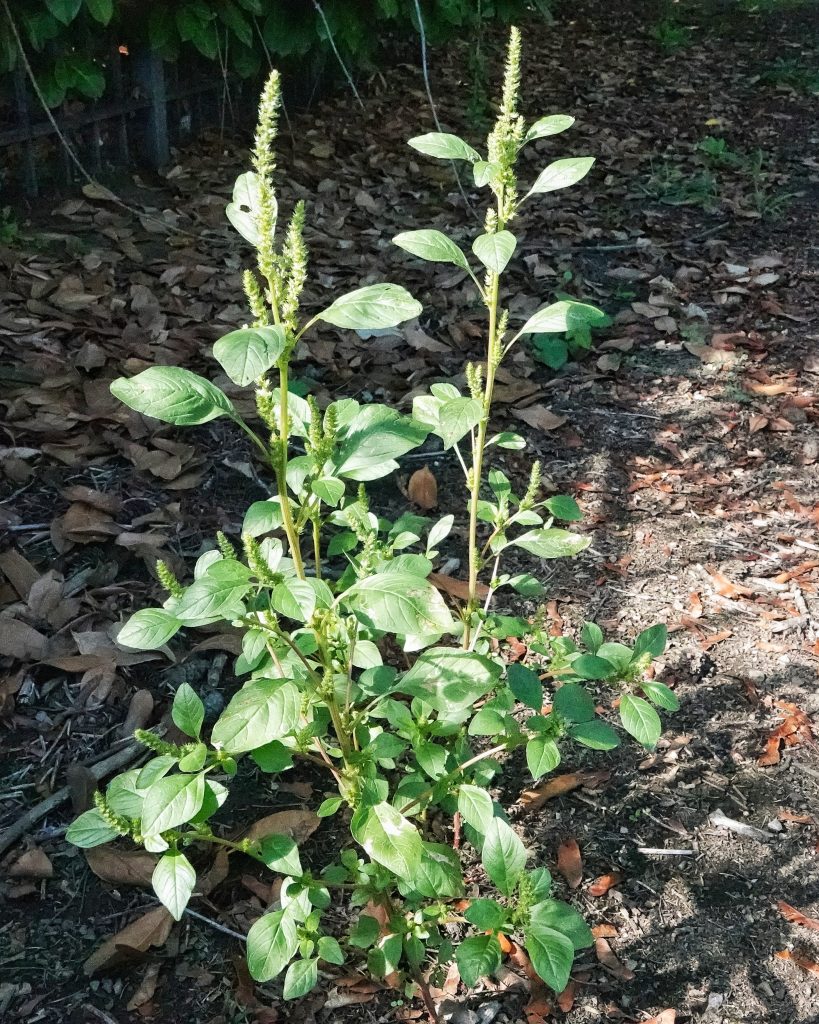
The other day, whilst taking a detour through the local cemetery to avoid a person who seemed to be arguing with the lampposts, I came across a patch of what I’ve always called pigweed, and decided it was time to find out what sort of pigweed it was. I did not anticipate how difficult that would be to determine. And, for reasons that will be clearer after the next quote, I wouldn’t bet my rent, or probably even my next meal, on having got it right. But based on the erect inflorescences, the long petioles of the leaves, and the awned sepals (and, if I’m honest, probably at least slightly influenced by my admiration of its namesake, John Wesley Powell) I am calling this Amaranthus powellii.
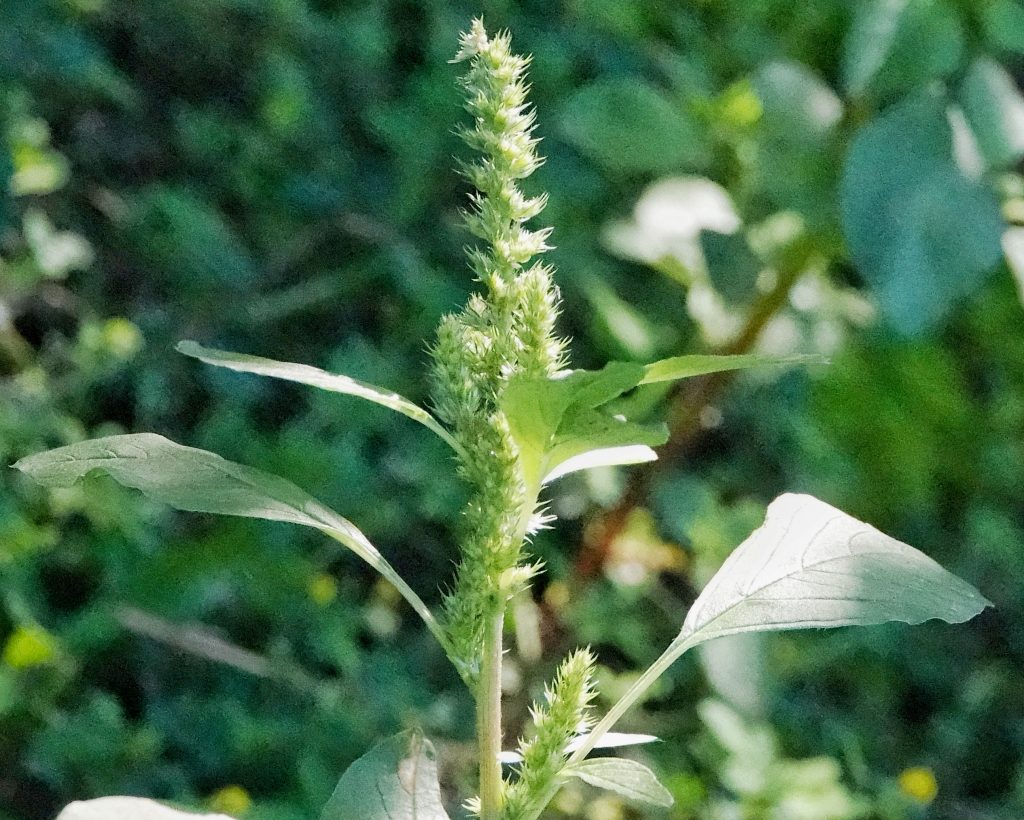
“It is widely agreed that the Amaranthus genus is, in the words of the Intermountain Flora authors, “studied by many [but…] poorly understood”. Welsh points out in his A Utah Flora that there are commonly misidentified collections in various herbaria and that several species are difficult to separate and do hybridize. Welsh further indicates that, at least in Utah, those specimens labeled S. powellii might be no “more than variations within… [A. retroflexus]”. In Manual of the Plants of Colorado, Harrington comes to the same conclusion: “A. powellii… appears to be merely a more glabrous form of…[Amaranthus retroflexus]”. However, the Flora of North America, BONAP, Flora Neomexicana III, Intermountain Flora (IMF), and various Colorado floras all accept A. powellii as a distinct species. The Flora of North America indicates, “Distribution of Amaranthus hybridus in North America needs clarification because the name was misapplied to other species, notably A. powellii… Specimens of A. retroflexus, A. powellii, and A. hybridus are frequently interchangeably misidentified. A. powellii, A. retroflexus, and A. hybridus are all monoecious annuals growing with very similar morphological characteristics in similar habitats and elevations. They have minute, crowded flowers in terminal and axillary spikes dominated by pistillate flowers with scattered staminate flowers.” Southwest Colorado Wildflowers, Amaranthus powellii
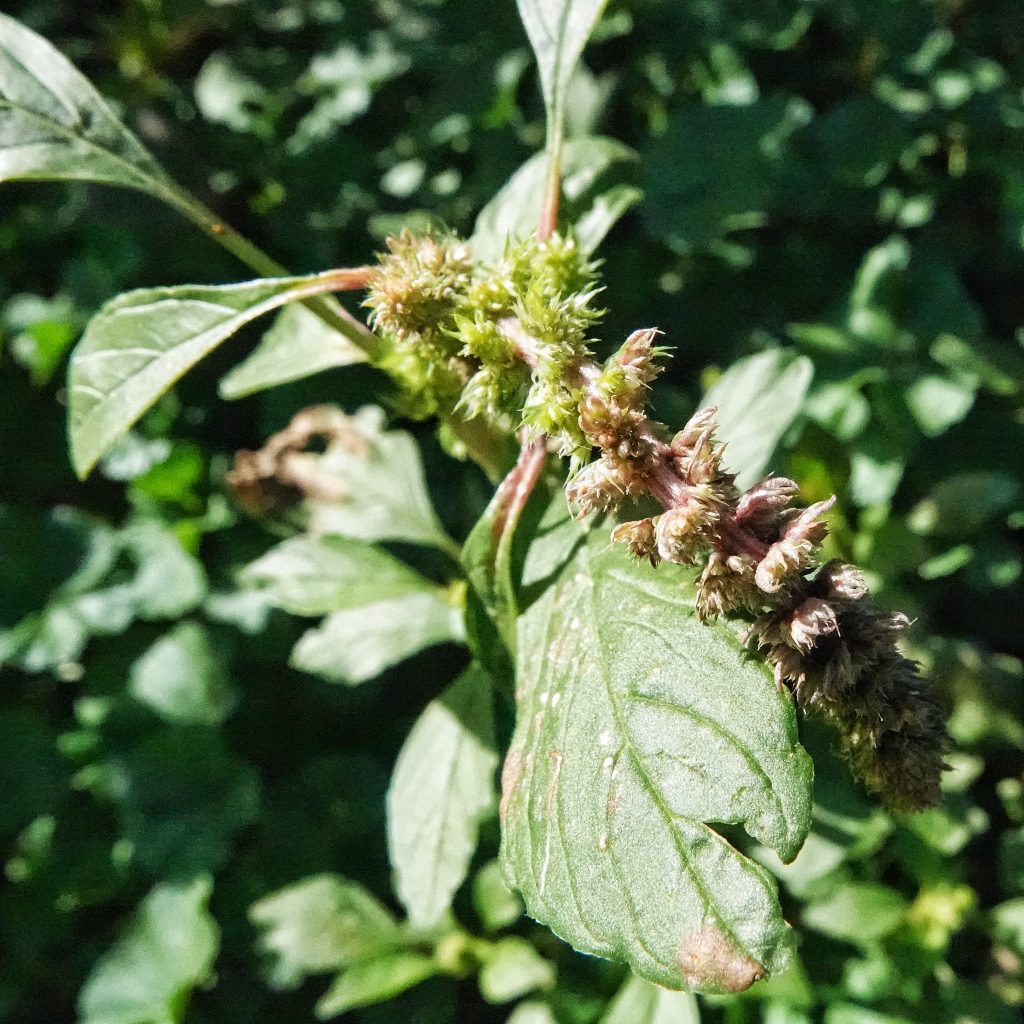
So it may turn out that, after the eventual molecular analysis, that there are less than 3 species in this complex, and that A. powellii (which is usually called Powell’s amaranth, but also goes by the common names Powell’s pigweed, Powell’s smooth amaranth, and green amaranth) is just a subspecies, or even merely a variation. And it also means that any lack of information on the faunal relationships of Powell’s amaranth (which was first described by Sereno Watson from plants grown using seeds sent to Harvard by Major Powell) may be due to it having been confused/conflated with another Amaranthus. Establishing these relationships between living organisms is why, despite the fact that it is sometimes confusing to us amateurs, it is important to get the taxonomy correct, so we actually know which two species are interacting with each other.
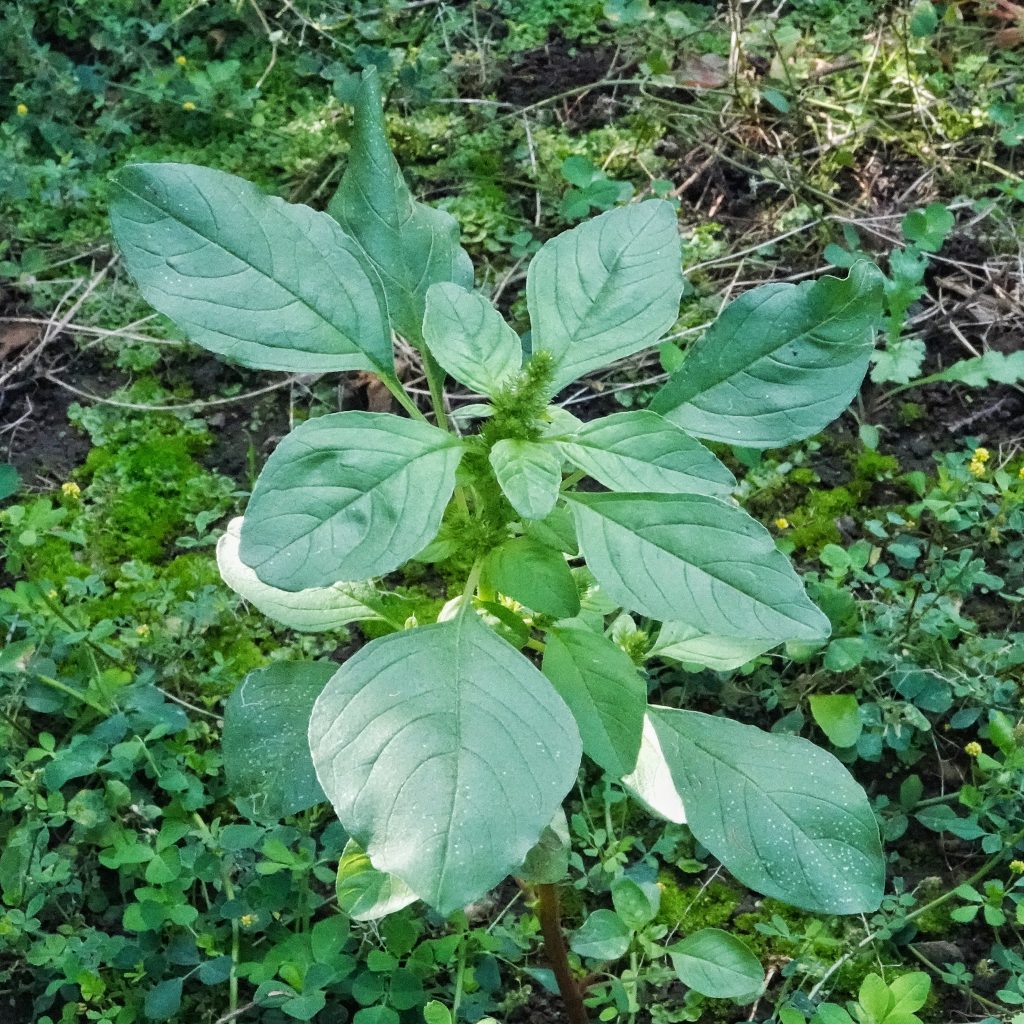
Amaranthus spp. have also been domesticated and grown agriculturally. “Intermountain Flora indicates that “the cultivated grain amaranths (A. caudatus, A. cruentus, and A. hypochondriacus) resulted from domestication of the wild species A. hybridus, A. powellii, and to a lesser extent A. retroflexus“. IMF also indicates that Amaranthus powellii hybridizes with A. hybridus and A. retroflexus and appears to be the wild progenitor of A. hypochondriacus.” Southwest Colorado Wildflowers, Amaranthus powellii. One of the reasons for their cultivation is because they do well in some situations where other crops do not fare as well. “Most if not all members of this genus photosynthesize by a more efficient method than most plants. Called the ‘C4 carbon-fixation pathway’, this process is particularly efficient at high temperatures, in bright sunlight and under dry conditions.” Amaranthus powellii – Useful Tropical Plants. Which is also probably one of the reasons why they are a such a successful weed.
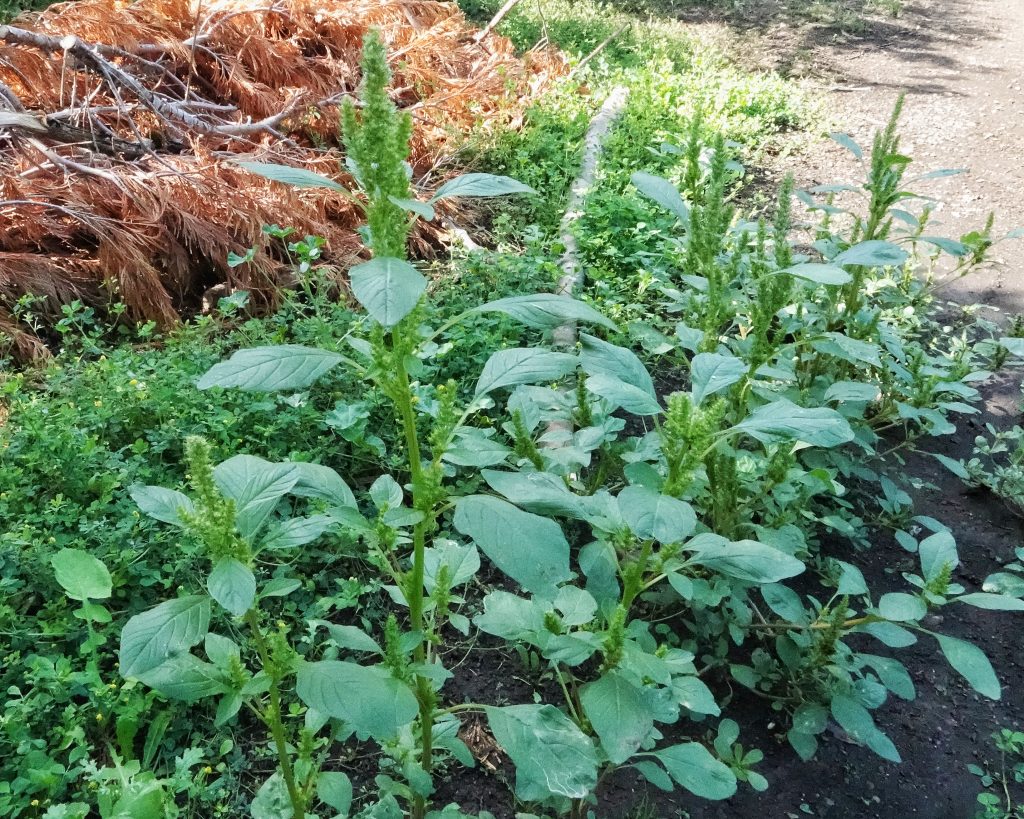
Ethnobotany– In the American Southwest, where this plant is native, the Hopi used the seeds for food, and ate the leaves as greens; modern forager usage: “Leaves – cooked as a spinach; Seed – cooked. Used as a flour. Very small but easy to harvest and very nutritious. The seed can be cooked whole, and becomes very gelatinous like this, but it is rather difficult to crush all of the small seeds in the mouth and thus some of the seed will pass right through the digestive system without being assimilated…Yellow and green dyes can be obtained from the whole plant.” Amaranthus powellii – Useful Tropical Plants
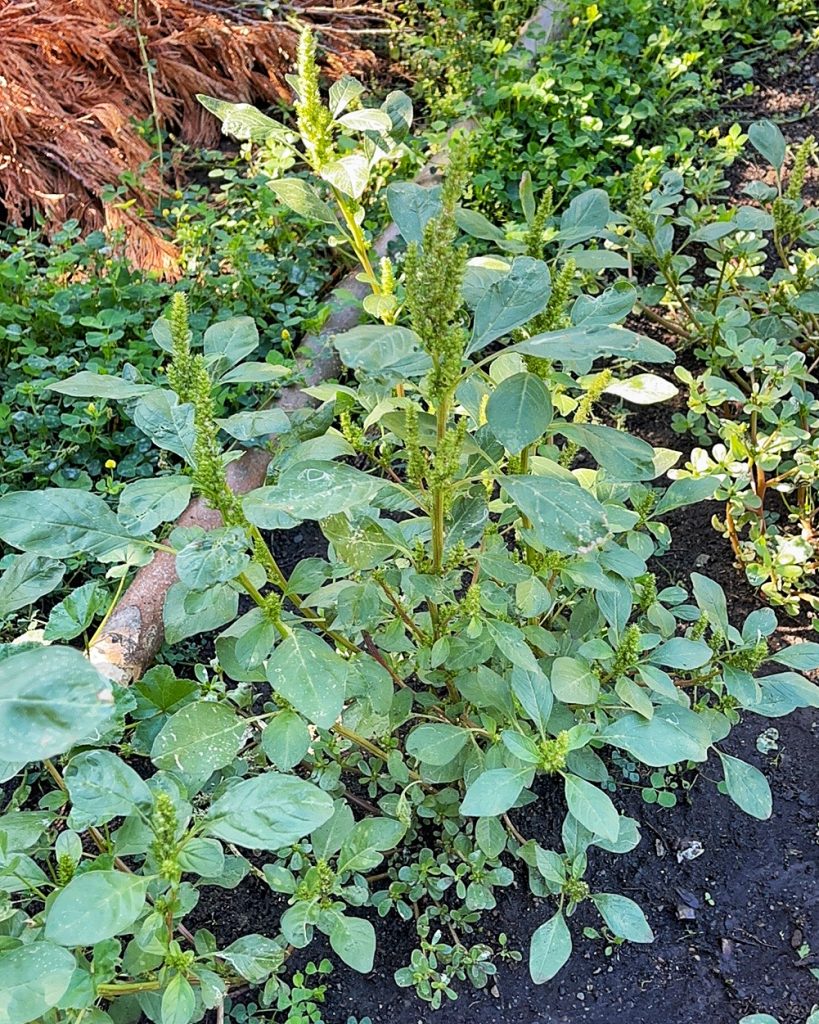
Description– “Plants mostly glabrous, occasionally villous near tips. Stems erect, branched or not, 2.5–15(20) dm, green or reddish purple. Leaves blades rhombic-ovate to broadly lanceolate, 3–6(8) cm, bases wedge-shaped, margins entire, flat to undulate, midveins extending to a short spine, tips obtuse to cuneate; petioles > blade, 3–6 cm. Inflorescences mostly terminal, sometimes axillary, rigid-erect panicles with few branches, green to pale green; bracts numerous, lanceolate to awl-shaped, 4–7 mm. Flowers perianth segments 3–5, similar in staminate and pistillate flowers, erect, not overlapping or reflexed, broadly linear to lanceolate, midveins extending to a spine, tips acute. Staminate flowers perianth segments unequal to subequal, generally at tips of inflorescences; stamens 3–5. Pistillate flowers perianth segments 1.5–3.5 mm; styles 3, spreading. Fruits subglobose to ovoid, 2–3 mm, smooth to slightly rugose at tips; dehiscence circumscissile. Seeds subglobose to lenticular, 1–1.4 mm, black, shiny. OregonFlora Amaranthus powellii
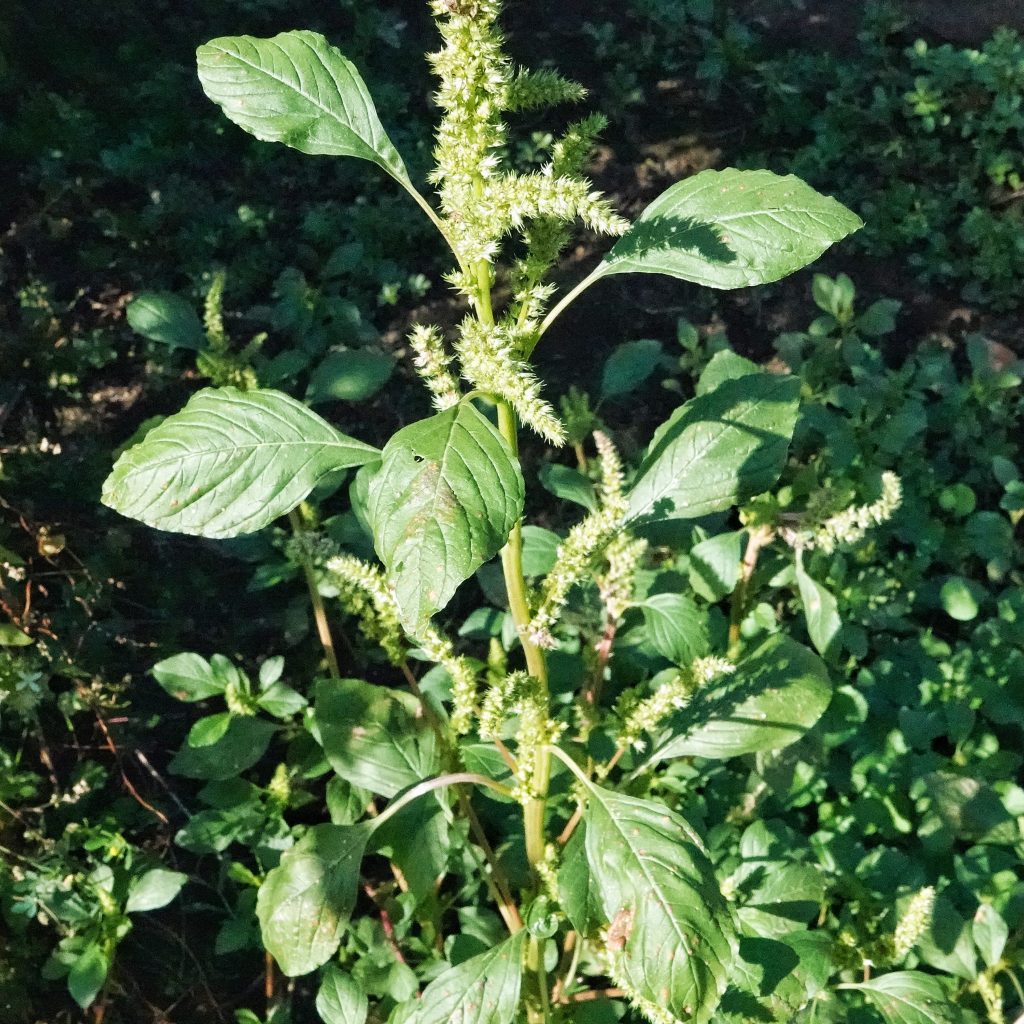
Similar species– Amaranthus hybridus has bracts that are 2-4mm long, inflorescences that are lax and nodding, and leaf petioles that tend to be less than half as long as the leaf; A. retroflexus has spoon-shaped to oval sepals with rounded tips; other Amaranthus either have all inflorescences in leaf axils, or are prostrate; Phacelia spp. have curled inflorescences
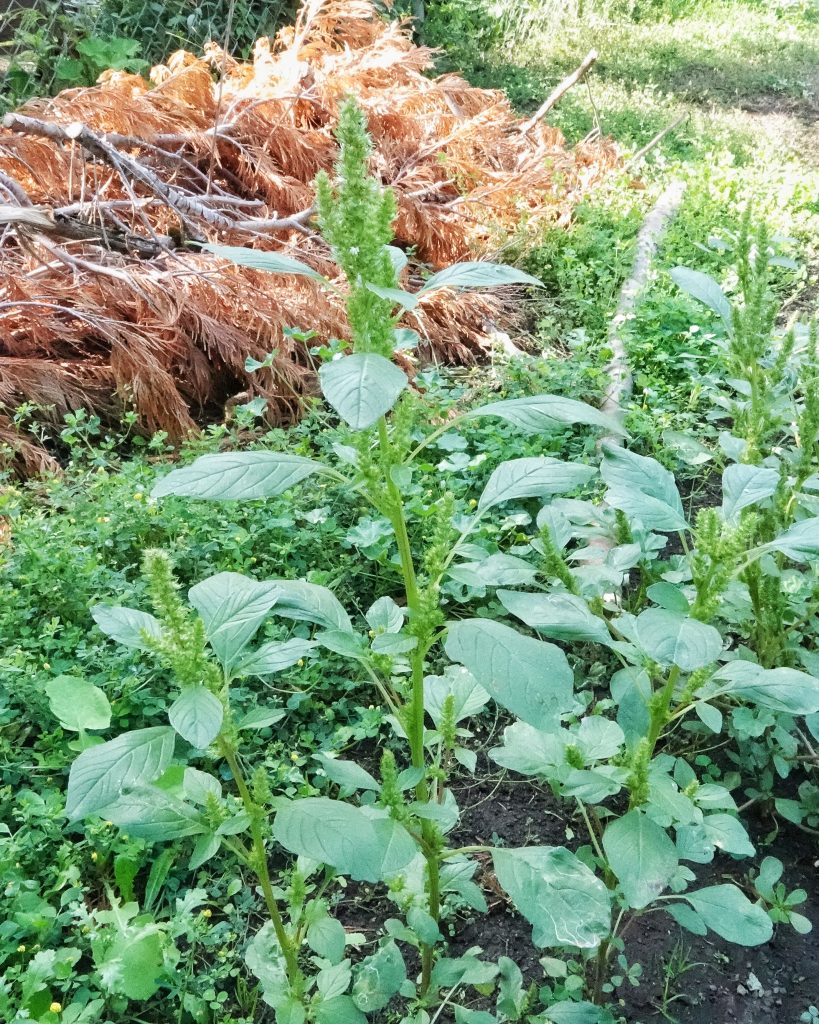
Habitat– “Waste places. Disturbed habitats, agricultural fields, railroads, roadsides, waste areas, banks of rivers, lakes, and streams; at elevations from sea level to 2,500 metres.” Amaranthus powellii – Useful Tropical Plants
Range– Nearly cosmopolitan; “Native to dry, mountainous regions in the southwestern US and Mexico, this weed is now naturalized throughout temperate North America” Powell Amaranth (Amaranthus powellii) | eOrganic; found region wide in the PNW
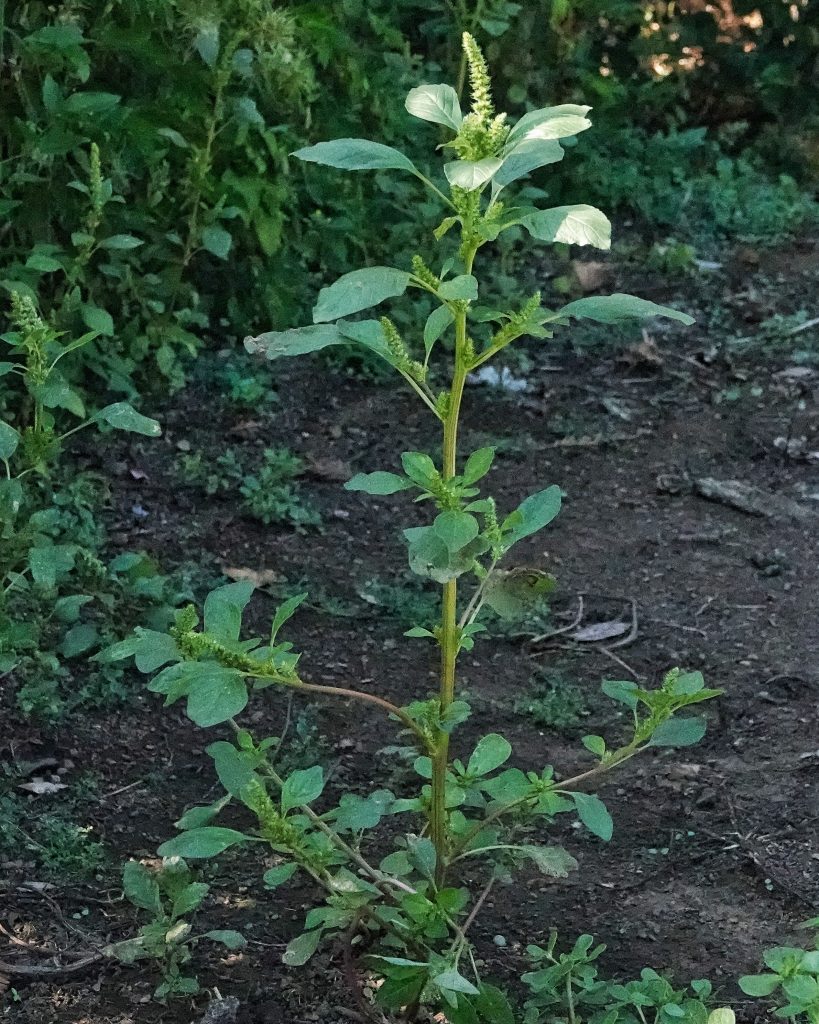
Eaten by– Larval host for the moths Sitochroa chortalis, Hahncappsia mancalis, and Scythris trivinctella, and there are a number of other leaf mining moths, as well as many leaf mining flies,that are known to feed on Amaranthus spp., though I can find nothing specific for this species; there are at least 10 members of Pentatomoidea (stink bugs and related species) and twice that many leaf beetles (Chrysomelidae) that utilize Anaranthus, but I can find nothing specific for this species; I would guess that browsing mammals eat the leaves, and small mammals and birds eat the seeds, but I can find nothing to confirm this.
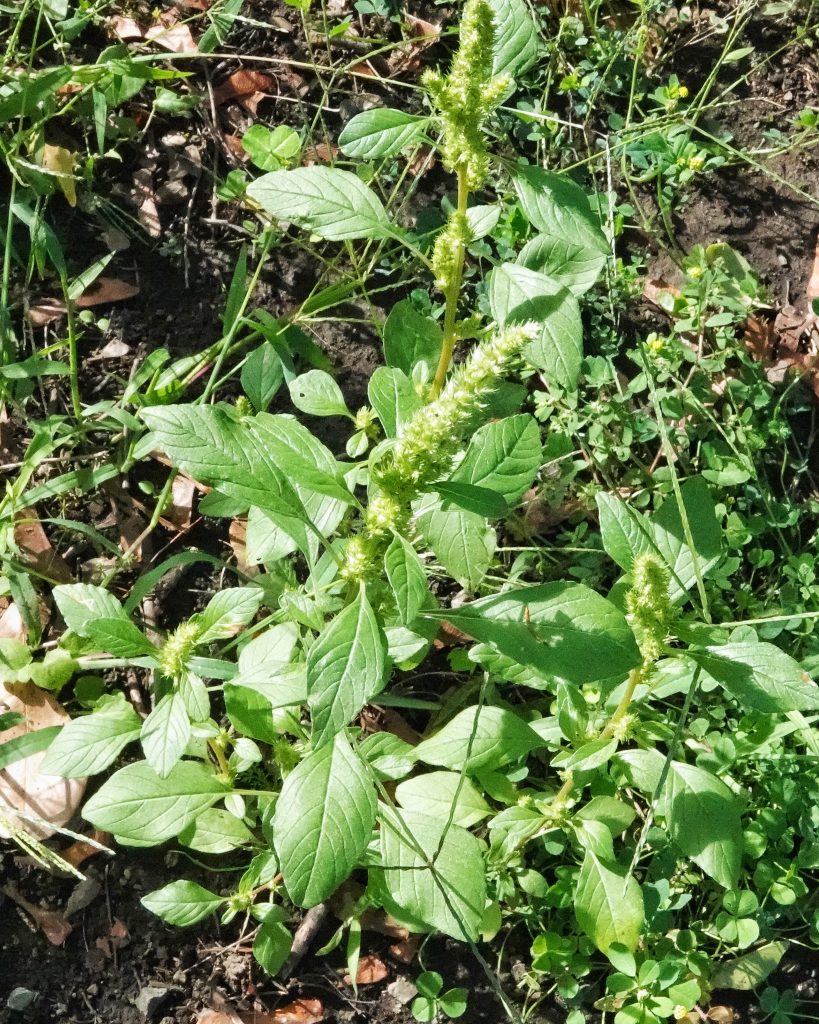
Reproductive timing– Flowers from July into October.
Etymology of names– Amaranthus is from the Greek word for ‘unfading’, and Linnaeus was referring to the fact than some members of this genus have flowers that retain their color for an extended period. The specific epithet powellii honors John_Wesley_Powell (1834-1902), an explorer, naturalist, geologist, conservationist, and, in my opinion, a genuine American hero, who is probably best known for leading the first US expedition to explore the Grand Canyon, and who was probably rolling in his grave when they named the abomination created by the Glen Canyon Dam, what Edward Abbey called “The damnation of a canyon”, after him.
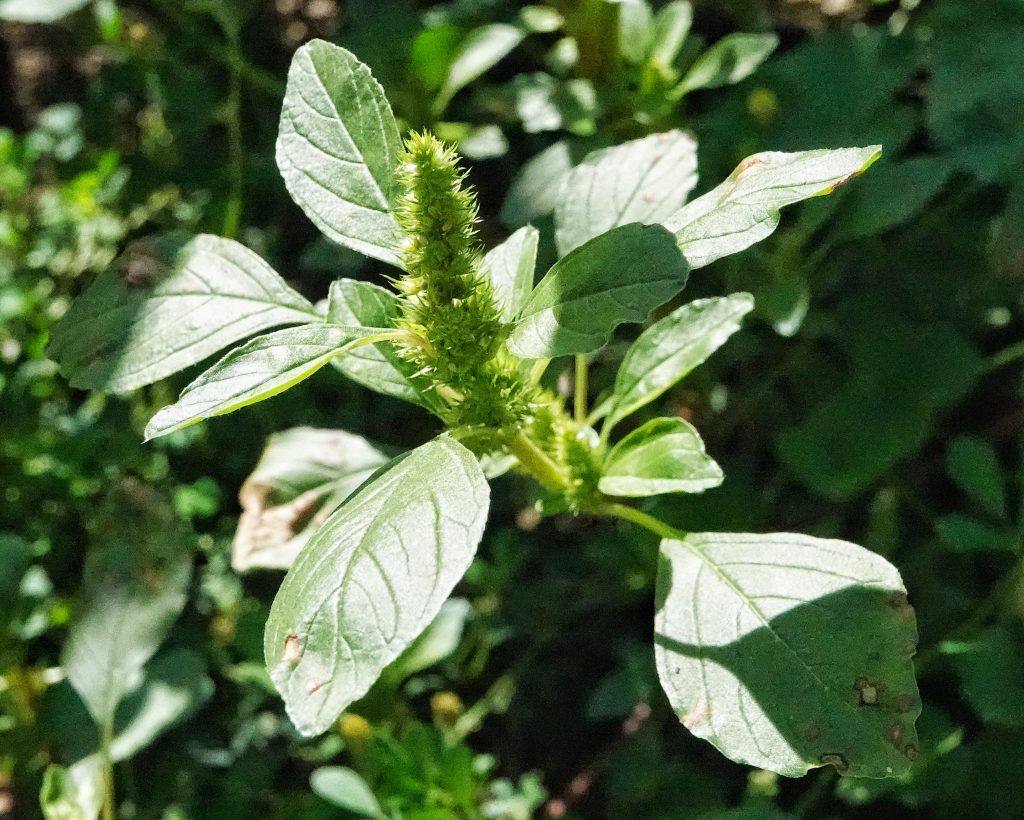
Amaranthus powellii – Useful Tropical Plants
Powell Amaranth (Amaranthus powellii) | eOrganic
Southwest Colorado Wildflowers, Amaranthus powellii
BRIT – Native American Ethnobotany Database
Amaranthus powellii in Flora of North America @ efloras.org
Amaranthus powellii – Burke Herbarium Image Collection
OregonFlora Amaranthus powellii
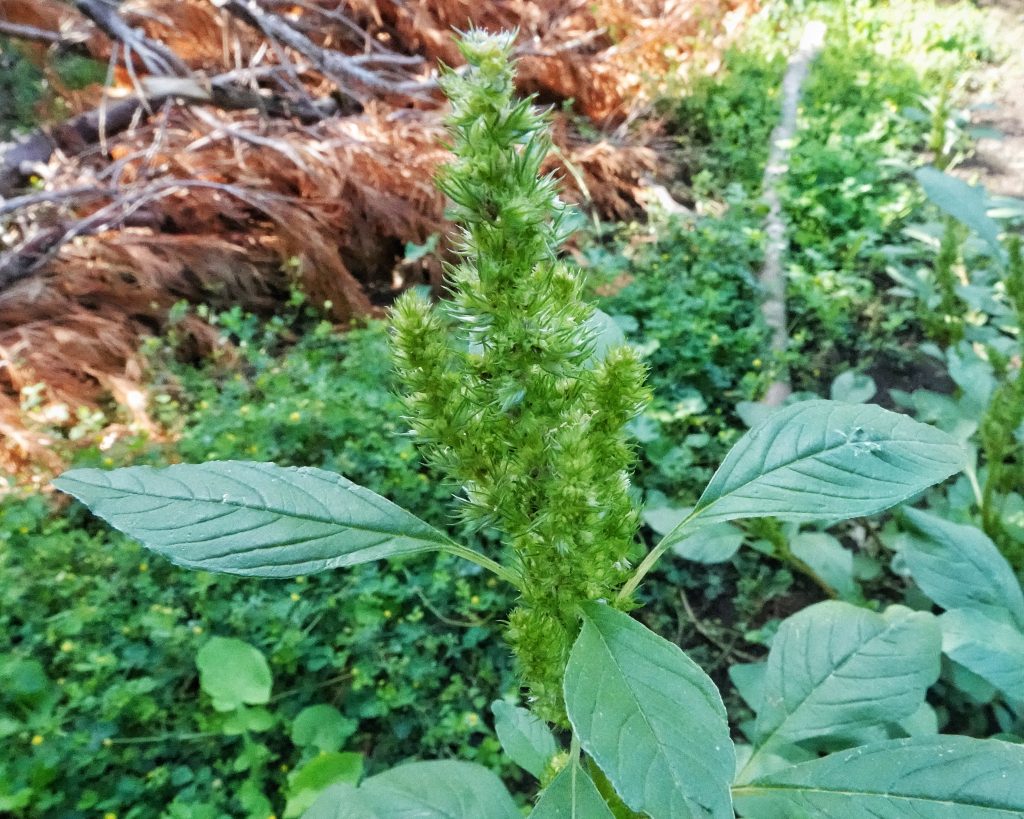
If that’s the same amaranth that comes up uninvited in my garden, then we can add that it’s a muscle-killing weed to pull out.
Well, Kat, I accidentally pulled one up trying to identify it, so I don’t know.
Come to my garden and compare the root strength–it’s for science! You’ll probably need lots of replicates, so I’ll leave them for you.